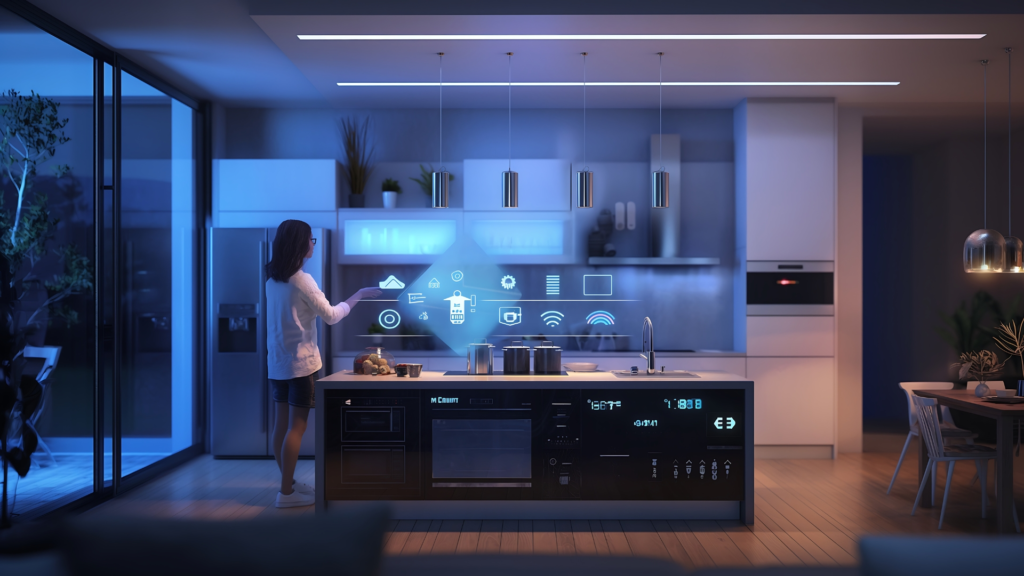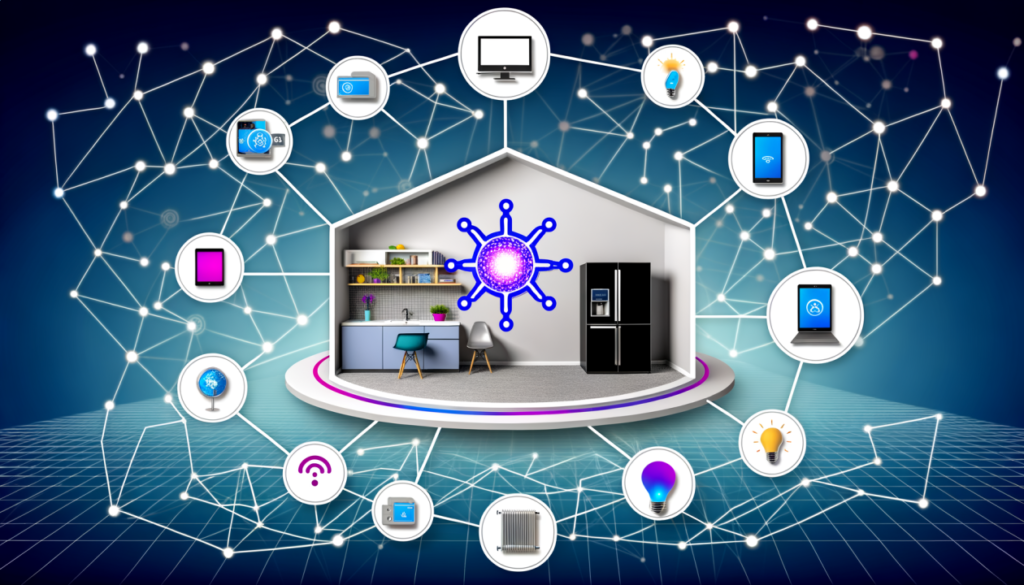The Internet of Things, commonly known as IoT, is rapidly changing how people live and work. It connects everyday objects to the internet, allowing them to send and receive data. This connection makes devices smarter, more efficient, and easier to control. From smart homes to large industrial setups, IoT is shaping the future.
What Is the Internet of Things (IoT)?
IoT refers to a network of physical devices embedded with sensors, software, and other technologies. These devices connect to the internet to collect and exchange data. The goal is to improve daily life by automating tasks, increasing efficiency, and providing useful insights. Examples of IoT devices include smart thermostats, wearable health monitors, connected cars, and industrial robots.

IoT in Smart Homes: Making Life Easier and Safer
Smart homes use IoT devices to improve comfort, security, and energy management. For instance, smart lighting systems can adjust brightness based on time of day or room occupancy. Smart thermostats learn user preferences and optimize heating or cooling, reducing energy bills. Security devices like smart cameras and door locks offer real-time monitoring and remote control, helping homeowners protect their property.
Many people use voice assistants such as Amazon Alexa or Google Assistant to control multiple smart devices with simple voice commands. This convenience is a major reason for the rising popularity of IoT in homes.
According to Statista, the number of connected IoT devices worldwide is expected to reach over 30 billion by 2025. This growth reflects increasing demand for smarter homes.
IoT in Industries: Boosting Productivity and Safety
Industries have also embraced IoT technology to improve operations. Known as the Industrial Internet of Things (IIoT), this approach connects machines, sensors, and control systems to gather data in real-time. This data helps managers monitor equipment health, predict failures, and optimize production schedules.
For example, factories use IoT sensors to track machine performance and detect early signs of wear and tear. This allows maintenance teams to fix issues before costly breakdowns happen. IoT also improves worker safety by monitoring environmental conditions like temperature, gas leaks, or machine operation, alerting supervisors when risks arise.
The use of IoT in industries is helping companies reduce downtime, lower operational costs, and increase efficiency. Businesses that adopt IoT technologies are better positioned to compete in today’s fast-paced market.
Benefits of IoT for Homes and Industries
The rise of IoT offers many advantages for both residential and industrial users. Key benefits include:
- Automation: Devices can perform tasks automatically, saving time and effort.
- Energy Efficiency: Smart devices help reduce energy use by optimizing resource consumption.
- Remote Monitoring: Users can control and monitor devices from anywhere using smartphones or computers.
- Predictive Maintenance: Industries can avoid equipment failure through early detection.
- Improved Safety: Real-time alerts prevent accidents in homes and workplaces.
- Data Insights: Analysis of collected data helps improve decision-making and operations.
Challenges and Security Concerns in IoT
Despite its benefits, IoT faces several challenges. One major concern is security. Because devices are connected to the internet, they are vulnerable to cyber-attacks. Hackers can exploit weak points in the system to access sensitive information or take control of devices.
Privacy is another issue since IoT devices often collect personal data. Ensuring that this data is stored and used responsibly is critical. Users and companies must adopt strong security measures, such as encryption and regular software updates, to protect their IoT systems.
Interoperability is also a challenge because IoT devices from different manufacturers may not work well together. Industry standards and cooperation among companies are necessary to create seamless IoT ecosystems.
The Future of IoT: What to Expect
The future of IoT looks promising. Advancements in technologies like 5G, artificial intelligence (AI), and edge computing will make IoT devices faster, smarter, and more reliable. These improvements will expand IoT applications in homes and industries.

Smart cities, where IoT connects traffic lights, parking meters, public transport, and utilities, are already being developed in many parts of the world. This integration aims to improve urban living by reducing congestion, saving energy, and enhancing public safety.
In industries, IoT will continue to drive innovation in automation and data analytics, creating more flexible and efficient production systems. IoT will also support sustainability efforts by helping companies monitor and reduce their environmental impact.
Conclusion
Internet of Things (IoT) technology is reshaping the way homes and industries function by connecting devices to create smarter environments. Whether it’s controlling home appliances remotely or optimizing factory operations, IoT brings convenience, safety, and efficiency to everyday life and business. As technology evolves, IoT’s impact will only grow, offering exciting opportunities for innovation and improved quality of life.
- For a detailed overview of IoT technology, visit Cisco’s IoT page.
- To understand how IoT is transforming industries, check out IBM’s Industrial IoT guide.
- Learn more about smart home devices and their benefits at Consumer Reports – Smart Home.
Also Read – Surprising New Ways Artificial Intelligence Is Used and Why It’s Concerning






